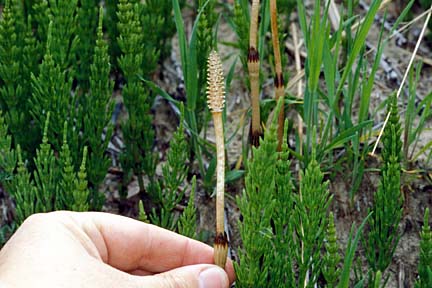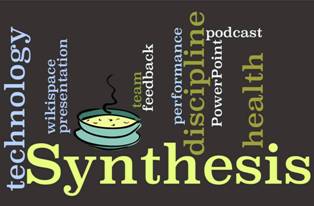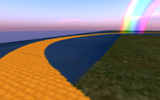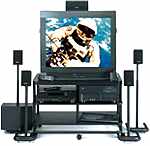I have to say that I am excited. Having been around the block a few times in my years as an educator, I  think I sometimes get a little jaded and perhaps always see a down side to every up. (Yeah, it’s a great tool, but how can I fit it in? How can I find time to master it? My twenty-four hours are full. My teachers will never try it.) So, when I say I am excited about something, I mean it.
think I sometimes get a little jaded and perhaps always see a down side to every up. (Yeah, it’s a great tool, but how can I fit it in? How can I find time to master it? My twenty-four hours are full. My teachers will never try it.) So, when I say I am excited about something, I mean it.
 I am excited because my kids are excited. Not everyone of them, but so many. It didn’t take much, but what it took was allowing them to be “content creators”. Not being so regimented. Letting them know that they had a say in something and could create an identity. The simple little blogging site we have been using has opened up a whole new world for them, and therefore for me. “Please, sir, I want some more.”
I am excited because my kids are excited. Not everyone of them, but so many. It didn’t take much, but what it took was allowing them to be “content creators”. Not being so regimented. Letting them know that they had a say in something and could create an identity. The simple little blogging site we have been using has opened up a whole new world for them, and therefore for me. “Please, sir, I want some more.”
This is our third year with David Warlick’s Classblogmeister site. I was timid at first. I waded out a little farther the second year, trying to think of some topics for the kids to write about, to help them understand what blogging was,  even as I was learning myself barely a step ahead of them. But they were far less fearful than I. Last year there were a few students, almost always girls, who would blog when the spirit moved them, writing short stories, poetry, anything. Fussing over their page backgrounds and font colors, although the choices are somewhat limited on the site. I was pleased that a few were doing it for fun rather than for a grade.
even as I was learning myself barely a step ahead of them. But they were far less fearful than I. Last year there were a few students, almost always girls, who would blog when the spirit moved them, writing short stories, poetry, anything. Fussing over their page backgrounds and font colors, although the choices are somewhat limited on the site. I was pleased that a few were doing it for fun rather than for a grade.
 Enter year three. Since this blog of mine is hosted by Edublogs, I received the notice of the Bloggers’ Challenge and decided it was something we might be able to handle. My goal in setting up a class blog originally had been to establish a platform by which classroom teachers could have students blog across the curriculum. The “home base” so to speak would be the tech class, and they only needed one username and one password. In two years time only two teachers have ventured to assign a post. But despite that, I felt it was a way for students to grow as writers and so I continued with or without the other teachers.
Enter year three. Since this blog of mine is hosted by Edublogs, I received the notice of the Bloggers’ Challenge and decided it was something we might be able to handle. My goal in setting up a class blog originally had been to establish a platform by which classroom teachers could have students blog across the curriculum. The “home base” so to speak would be the tech class, and they only needed one username and one password. In two years time only two teachers have ventured to assign a post. But despite that, I felt it was a way for students to grow as writers and so I continued with or without the other teachers.
Thanks to the Bloggers’ Challenge, one of the first things they did this year was to create an avatar to  represent themselves on their blogs. The lightbulb appears over my head when I see that…they love it. They absolutely love it. A simple little thing like creating a character that could be cool, or silly, or wild…green mohawk, guitar in one hand, cell phone in the other; little microphone-clutching divas and tiny sports figures. But they owned it, they controlled it, they created it. (one rule: no cigarettes or weapons)
represent themselves on their blogs. The lightbulb appears over my head when I see that…they love it. They absolutely love it. A simple little thing like creating a character that could be cool, or silly, or wild…green mohawk, guitar in one hand, cell phone in the other; little microphone-clutching divas and tiny sports figures. But they owned it, they controlled it, they created it. (one rule: no cigarettes or weapons)
They also now could create a title for their blog page. Why didn’t I think of doing that before? From “City Boy” to “Red Herring” to “Boulevard of Broken Dreams”, they find another way to express themselves. But what they want most of all is to know that other people are reading what they write (and here is where I  make my case for spelling and grammar and punctuation). Almost every one of them listed in their first post that their goals were to reach out to other students, learn about them, communicate with them, have those students visit and read their blog posts, leave comments. In scanning the long list of challenge participants, younger ones with their teachers and older ones (ages 14-17) who entered on their own because they have their own personal blogs and want to communicate and want others to find them and read their thoughts, I have come to realize that they all seek the same thing. To create something, and to have someone notice that they have created something, and hopefully to receive feedback to show that their creation has value.
make my case for spelling and grammar and punctuation). Almost every one of them listed in their first post that their goals were to reach out to other students, learn about them, communicate with them, have those students visit and read their blog posts, leave comments. In scanning the long list of challenge participants, younger ones with their teachers and older ones (ages 14-17) who entered on their own because they have their own personal blogs and want to communicate and want others to find them and read their thoughts, I have come to realize that they all seek the same thing. To create something, and to have someone notice that they have created something, and hopefully to receive feedback to show that their creation has value.
The Pew study (Pew Internet & American Life Project – “Teens and Social Media”) shows that it is girls who dominate the blogosphere, with a strong  correlation between blogging and other content creation among teens. In my students grades 6 through 8 I see the eagerness of the girls surpasses the boys, and they are already going beyond the scope of the project. After learning how to insert a widget into the sidebar (their choices were a flag counter or ClustrMap) one girl was clever enough to figure out how to insert a second widget, a virtual pet, just by reading other student blogs and noticing what others had done. And since I was absolutely fine with that, the floodgates opened and they began searching for more ways to individualize.
correlation between blogging and other content creation among teens. In my students grades 6 through 8 I see the eagerness of the girls surpasses the boys, and they are already going beyond the scope of the project. After learning how to insert a widget into the sidebar (their choices were a flag counter or ClustrMap) one girl was clever enough to figure out how to insert a second widget, a virtual pet, just by reading other student blogs and noticing what others had done. And since I was absolutely fine with that, the floodgates opened and they began searching for more ways to individualize.
Our latest venture is commenting: how to comment constructively, how to continue a conversation, how to make it easy for others to come back to your blog page. Their hopes for many visitors from all over the world  may not be met, but perhaps being permitted some freedom to showcase their thoughts, their artwork, their favorite websites or games, will make them begin to think outside of the box in other areas also. Perhaps their enthusiasm will even move a few teachers to get involved. When you teach third graders to enter a one sentence blog post and see it on “their page” and then find one of them has gone home and written 5 posts on his own and is requesting publishing (so what if 2 of them are jokes)…well I can’t help feeling that something good is going on.
may not be met, but perhaps being permitted some freedom to showcase their thoughts, their artwork, their favorite websites or games, will make them begin to think outside of the box in other areas also. Perhaps their enthusiasm will even move a few teachers to get involved. When you teach third graders to enter a one sentence blog post and see it on “their page” and then find one of them has gone home and written 5 posts on his own and is requesting publishing (so what if 2 of them are jokes)…well I can’t help feeling that something good is going on.
Avatar images created by students using AvatarPortraitMaker.

 There are a few minor success stories. One project completed with eighth grade last year allowed for developing skill in technology tools in the completion of a project based on the health curriculum. Mrs. C, our health and phys ed teacher, and I worked together and did extensive planning for this project. We did feel that we had accomplished our goals because we didn’t say, “Oh let’s not ever try this again!” On the contrary, we plan to do it again this year but fine-tune any weaknesses we encountered the first time. I will explain how we blended health subject matter and technology literacy in this project following Gardner’s four loosely ordered “components of synthesis” (the recipe for Synthesis Soup):
There are a few minor success stories. One project completed with eighth grade last year allowed for developing skill in technology tools in the completion of a project based on the health curriculum. Mrs. C, our health and phys ed teacher, and I worked together and did extensive planning for this project. We did feel that we had accomplished our goals because we didn’t say, “Oh let’s not ever try this again!” On the contrary, we plan to do it again this year but fine-tune any weaknesses we encountered the first time. I will explain how we blended health subject matter and technology literacy in this project following Gardner’s four loosely ordered “components of synthesis” (the recipe for Synthesis Soup): Is there an Emerald City of education where all these concerns can be resolved? If Gardner had a visiting superintendent who wanted to see examples of such-and-such because that is where you should be in the social studies curriculum, but instead he as the teacher had done a very in-depth project that took several weeks, how would he respond to the question? Does this say to us that there needs to be a revolution in thinking “at the top”? We educators have brains, and heart, and (for the most part) we ARE striving to create life-long learners. We need to gather up our courage and creativity and keep trying to do what will allow our students to “come to enjoy the process of learning about the world” and see learning as a joy rather than a chore. Perhaps we can see Emerald City in the distance, but the yellow brick road sure has a lot of bumps along the way.
Is there an Emerald City of education where all these concerns can be resolved? If Gardner had a visiting superintendent who wanted to see examples of such-and-such because that is where you should be in the social studies curriculum, but instead he as the teacher had done a very in-depth project that took several weeks, how would he respond to the question? Does this say to us that there needs to be a revolution in thinking “at the top”? We educators have brains, and heart, and (for the most part) we ARE striving to create life-long learners. We need to gather up our courage and creativity and keep trying to do what will allow our students to “come to enjoy the process of learning about the world” and see learning as a joy rather than a chore. Perhaps we can see Emerald City in the distance, but the yellow brick road sure has a lot of bumps along the way.
 wonderful to be able to share ideas and practices, to learn new things together, and sometimes just commiserate. I have become especially active in the
wonderful to be able to share ideas and practices, to learn new things together, and sometimes just commiserate. I have become especially active in the